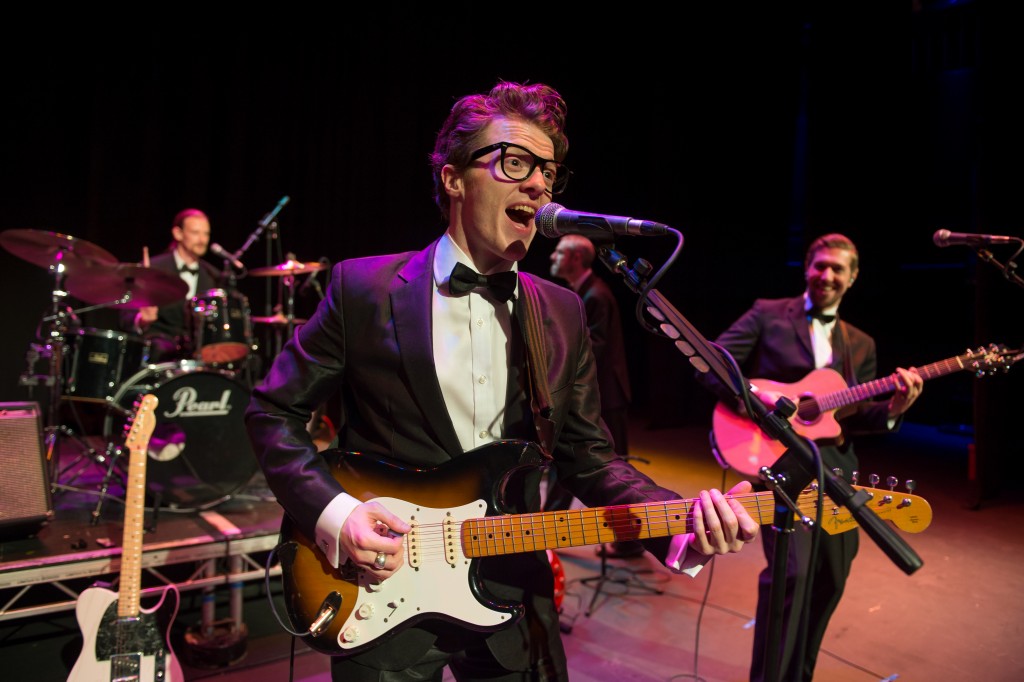

What Was Buddy Holly Known For?
3 min read
Share
Buddy Holly was an American singer and songwriter known for his influential rock music work.
He was born Charles Hardin Holley in Lubbock, Texas on 7th September 1936 and tragically passed away at only 22 years old in a plane crash.
At only 16, Buddy Holly was already a seasoned performer with hit songs like That’ll Be the Day and Peggy Sue.
His performing name, Buddy Holly, came from his mother’s nickname of ‘Buddy’ because she felt his given name was too long for her little boy, and ‘Holly’ because his last name was misspelled on his first recording contract.
Buddy – The Buddy Holly Story
22nd October to 26th October 2019
This heart-rending and dynamic show immortalises Buddy Holly’s life and career, celebrating his music, his life, and the man himself. Book tickets here to watch the show at the Grand.
Buddy Holly and The Crickets
“Rock & roll as we know it wouldn’t exist without Buddy Holly.”
— Rock & Roll Hall of Fame
Rolling Stone ranked Buddy Holly 13th on their “100 Greatest Artists of All Time” list in 2011, and with good reason. His musical career started at a very young age, when he learned to play the piano and the fiddle. He also learned the basics of guitar from his older brothers.
Buddy Holly formed a band after high school, paying western and country songs on a radio station in Lubbock. Before his crucial moment opening for Elvis Presley in 1955, he opened for prominent national acts touring through town.

The conversion to rock ‘n’ and roll lead to Buddy Holly signing a contract after being spotted by a talent scout at a skating rink act. Together with his band in early 1956, Holly started recording singles and demos in Nashville. They first called themselves Buddy Holly and the Three Tunes before revising their name, and Buddy Holly and The Crickets were born.
In 1957, the breakthrough hit That’ll Be the Day was written and recorded by Holly with The Crickets. They had seven different Top 40 singles charting between August 1957 and August 1958.
October of 1958 saw Holly breaking from The Crickets and moving to Greenwich Village, New York City. At the time, he was facing financial and legal problems due to the band breaking up, so he reluctantly agreed to go on tour through the Midwest in 1959 with The Winter Dance Party.
It was during this tour that Buddy Holly, Ritchie Valens, and The Big Bopper suffered the tragic plane accident.

Buddy Holly’s Influential Music
American Pie by Don McLean memorialises Holly’s death as “the day the music died.” Holly’s music continued to be popular alongside film adaptions of his life. Even though he only had a two-year career, Holly’s work has influenced artists such as Bob Dylan and Elvis Costello, the latter who saw Holly perform when he himself was 17.
The Rolling Stones’ first single reaching Top 10 was a cover of Buddy Holly’s song Not Fade Away, in 1964. The “Buddy Holly Glasses”, a horn-rimmed model, became extremely popular and recognisable even in present day.
Similarly, Holly’s band The Crickets helped to pioneer the two guitars, bass, and drums rock line-up that has now become standard. Without The Crickets, we wouldn’t have The Beatles. They were big fans and named their band as a pun.























